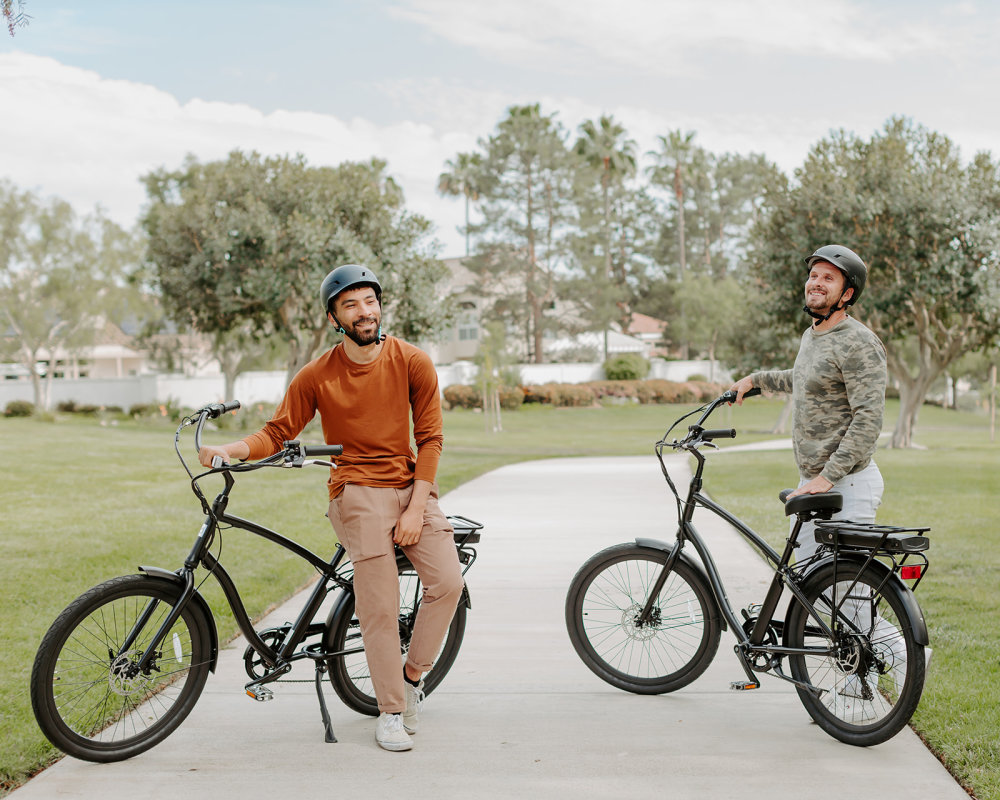E-Bikes & Bikes Customised to You
Cold Weather and eBikes: Everything You Need To Know
Updated On: June 7, 2023
Ebikes are convenient and efficient means of transportation. Unfortunately, not everyone lives in a climate conducive to daily riding, especially in the winter. Winter riding requires some additional precautions and understanding to ensure your safety.
Can You Ride Ebikes in Cold Weather?
You can ride your ebike in cold weather, but you should keep several things in mind. Freezing temperatures can damage your battery, so to protect it, store it indoors. If you leave your bike and battery outside, refrain from charging it until it warms up.
Cold weather riding will expose your ebike to the elements and salt. After taking your bike for a ride, wipe it down. Salt can corrode finishes and materials if left on the surface.
Beware of ice. Riding a motorized bike is like driving a slower vehicle. Take your time and give yourself more braking distance.
How Cold Is Too Cold To Ride Your Ebike?
Winter temperatures can fall below freezing in many areas. Always wear the appropriate clothing and gear if you decide to ride in frigid temperatures.
An electric bike can usually handle temperatures as low as -5° Fahrenheit for riding. However, the battery cannot charge at 32° Fahrenheit.
Riding or storing your ebike at frigid temperatures can affect battery performance and range. You will need to plan accordingly.
How To Store Your Ebike in the Winter
If your ebike has a removable battery, you can store the bike in a garage and the battery in your home. Ideally, the battery should remain in stable temperatures, between 55° and 75° Fahrenheit. If the battery is not removable, you will need to store the entire bike at the above temperatures.
If you do not plan on riding your bike for 30 days or more, make sure the battery has a 50% to 70% charge. Storing a lithium-ion battery depleted for extended periods may leave the battery unrecoverable.
How To Keep Your Ebike Battery Warm in the Winter
As a cold battery does not perform as well as a warm one, often affecting range, it is vital to keep it warm during winter rides. You can purchase a cover or warmer to maintain stable temperatures and protect your range.
Can You Ride an Ebike in the Snow?
Riding an ebike in the snow is possible, but you should be careful. Snow is not the only ground cover to worry about in the winter; ice is also a threat.
If you want to ride in the snow, it is best to use a bike with appropriate tires. Use tires with a broader surface area or larger treads, like fat tires. You can also opt for studded tires to improve grip.
What Ebikes Are Best for Riding in the Snow?
Fat tire ebikes are likely the best winter options. The wider tires provide more contact with the ground, allowing for more grip and friction. Fat tires are also better for slower, more cautious riding.
Safety Precautions for Your Winter Ebike Rides
While safety is crucial during any season, it is even more so in the winter. Some specific winter riding safety tips include:
- Always wear your helmet
- Use lights and warning devices
- Always check tire pressure
- Use mirrors
Your safety is of paramount importance when riding in the winter. The shorter days and colder temperatures increase the need for precautions. However, when done with planning and caution, winter ebike riding is safe.
Before taking your ebike out for a winter weather spin, make sure you check the forecast and temperature. If you want more information about the safety of winter riding or tips about specific winter gear, contact a local ebike retailer.
Fit





